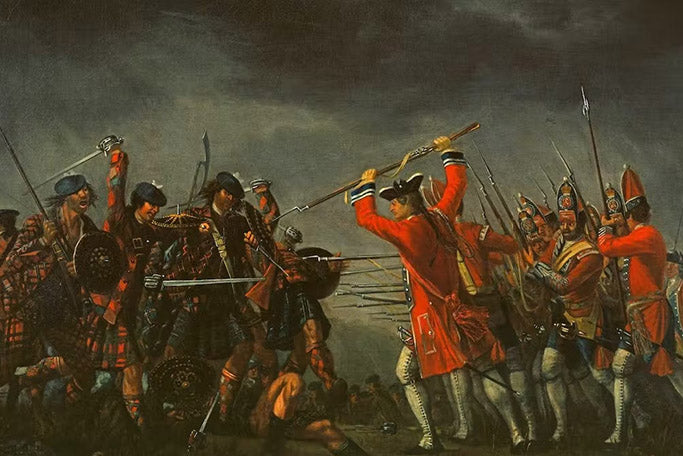Culloden
-

-
Some people think I’m psychic, but I’m not convinced. No, not me. At least not until today. Today I stand on Drumossie Moor, a desolate, windswept, God-forsaken place; the battlefield of Culloden, seven miles from the newly appointed Highland capital, Inverness.
Here on the 16th April 1746, it took less than 40 minutes to destroy not only the hopes of a young, unrealistic, pretender to the English and Scottish thrones, ‘Bonnie’ Prince Charles Edward Stuart, but also the prevailing structure of Scottish life.
The National Trust of Scotland manages Culloden Battlefield. A bright new visitor centre welcomes you, providing the usual home-made soups, scones, pies and teas, all at odds with what lies outside, the site of some 1000-1200 graves of the Scottish clansmen that fell during the last battle to be fought on British soil.
Here outside, it is raining. Fine, icy, horizontal drizzle that permeates everything you are wearing. In February this is to be expected; records show that in April 1746 the weather was no better.
The Prince’s troops, known as Jacobites, spent a hard winter retreating from Derby. Arriving in Inverness in late February 1746, most were barefoot, ragged, and starving. Seven weeks’ rest here did little to improve their situation.
A Jacobite officer wrote in his journal, “My men were so tired before the battle that many fell asleep in the parks of Culloden House and did not wake until they found the enemy cutting their throats.”
After the battle the slaughter continued, allegedly including spectators from Inverness, even women and children.From the visitor centre, a gravel path leads past ‘Old Leanoch Cottage’, a surviving farmhouse. Rumour tells us it was here, in one of its barns, that 30 Jacobites were burnt alive. Further along another path stands ‘The English Stone’ commemorating the English dead; their losses, under the Duke of Cumberland, believed to be as little as 50. Further on still lie ‘The Graves of the Clans’.
Small, simple stones mark the names of the clans. Here at my feet lay the Mackenzies, just over there, the Frasers. They lay either side of a narrow paved path, the stones marking slight ridges in the grass that are said to be their mass graves. Whilst heather abounds in the surrounding area, none grows on the grass ridges, nor do I hear the sounds of wildlife. At the end of this path stands a 20-foot high memorial cairn erected in 1881. At the foot of this, someone has laid a few Tesco-bought cellophane-wrapped, and now saturated, chrysanthemums. A local says that in the summer, visitors lay tributes here all the time.
Culloden is not a cheerful place. The air here seems to sit heavily on you, and there isn’t even much to see. But if you want a better understanding of Scottish/English history, then a visit is a must. For many, a visit to Culloden is a pilgrimage.

